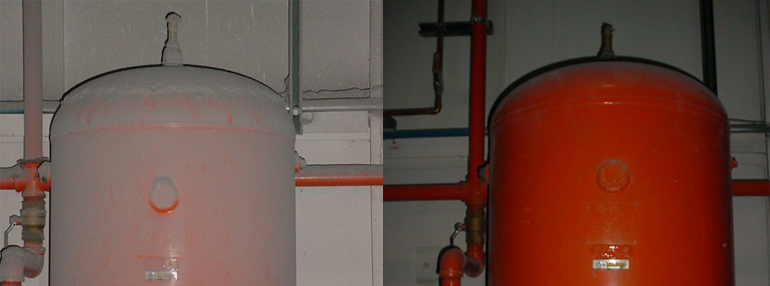Although most industrial facility managers do their best to keep health and safety top-of-mind at all times, processes that result in airborne particles are constantly working against them.
In many industrial plants, layers of fine, potentially combustible dust are being formed. Once these particles settle on rafters, HVAC equipment, or around your machinery with the potential to get stirred up, they present a serious safety hazard.
You can see an ongoing list of combustible dust incidents in the Combustible Dust Incident Database.
4 TYPES OF COMBUSTIBLE DUST COMMONLY FOUND IN PRODUCTION PLANTS
While it is obvious that some types of dust are combustible (for instance, aluminum, bronze, magnesium and zinc), you may not think of others as posing the same insidious danger.
Having years of experience working in industrial environments, our crew at Great Lakes Power Vac (GLPV) has encountered and mitigated combustible dust in many forms to reduce explosion and fire risks for our customers.
Listed below are some examples of combustible dusts GLPV regularly tackles.
1) Coal Dust
Often created as the result of running conveyers and other routine processes, coal dust is highly combustible when airborne. Utilities, in particular, experience high volumes of coal dust buildup within their facilities and in their process equipment.
If ignored, these fugitive dusts could explode or ignite causing serious problems such as injury, structural damage, and plant downtime…not to mention bad press.
2) Flour, Grain, and Food Dust
For those working in the food and beverage production industries, flour or grain dust also poses an explosion risk. Whether particles become airborne through ingredient mixing, storage applications, or packaging processes, food dust can quickly ignite under the right conditions.
By ensuring dust layers are routinely cleaned from structures inside your facility (such as rafters, beams, bag houses, silos, industrial ovens, etc.), you can help prevent opportunities for these costly issues to occur.
3) Saw and Wood Dust
Organic dust from wood (often resulting from sawing, sanding or similar applications) is another type of combustible media that must be considered. Layers of sawdust commonly occur in a mill or other manufacturing-type setting, often in hard to reach places.
Because of this, the dust can easily become out of sight and out of mind. The pending risk of fire or explosion, however, should not be ignored. Safe, compliant, overhead vacuuming is needed to mitigate the issue.
4) Paper Fines
Paper fines are another form of organic media that present a very real fire or explosion hazards. Occurring as a result of production processes in paper mills, printing factories and other similar environments, this type of combustible dust can quickly become a big problem.
OSHA views combustible paper fine hazards very seriously. In February 2019, they penalized a Mississippi paper mill over $300,000 for failure to remove combustible dust.
Why risk it? Prevent the accumulation of paper fines in the first place by scheduling routine inspections and cleanings. This will ensure the health and safety of your workforce while limiting your liability at your facility as well.
TRUST YOUR COMBUSTIBLE DUST REMOVAL TO GLPV
Does your facility struggle with any of the above? Trust your overhead dust vacuuming to Great Lakes Power Vac.
Since fire and explosion risk is greater when particles are airborne, we never blow down media. Instead, we only vacuum media with the use of equipment that is either static dissipating or can be grounded and bonded.
Our skilled, professional team at GLPV has years of experience in combustible dust environments, is educated in Class II, Division 2 dust removal guidelines, and utilizes the latest equipment to mitigate risk and ensure environmental safety.
If you’re interested in learning more about the types of combustible dust in your facility and how we can help with removal, contact us online today or give us a call at 800-822-4887.

